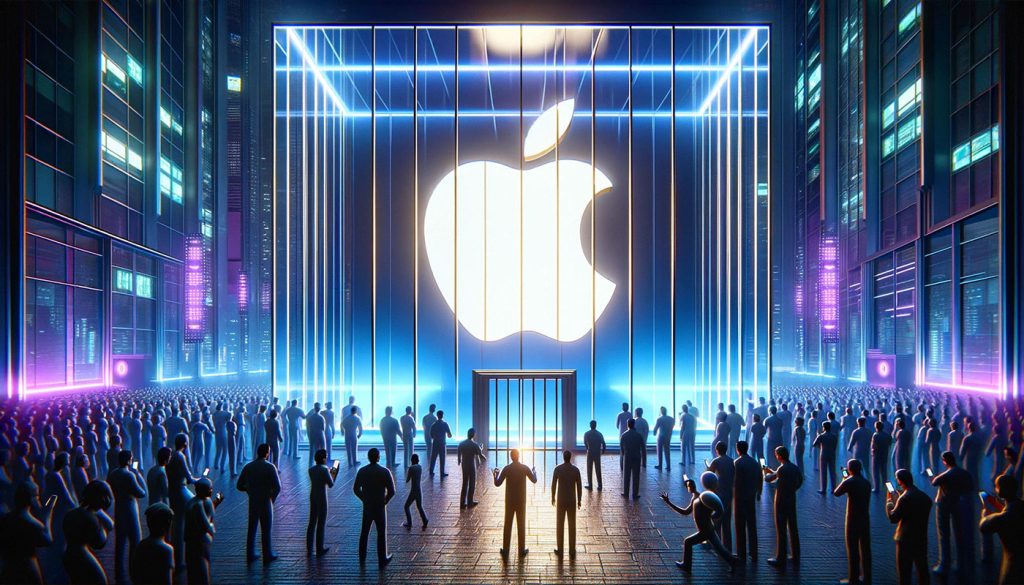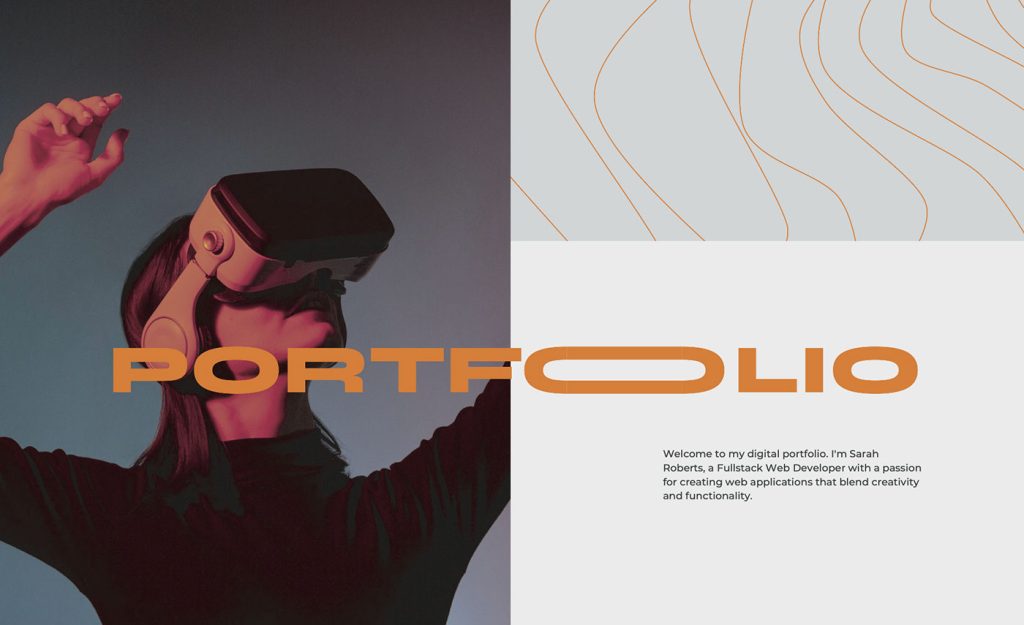If you’re a fan of the show Mad Men or have seen the opening, then you’ve seen a motion graphic.
Motion graphics were all the rage in the 1960s (hence the look for the Mad Men series set in the advertising field of the 1960s) and were popular in movies, TV show openings and commercials.
You’ve seen plenty of them, now that you’ve put the graphic with the term. They’re once again on TV, commercials, movies, web sites and any other visual medium.
Is it that they are retro? Do they bring back a feeling of simpler days? Are they just visually pleasing and that’s why they have been discovered again? Some people will say that they never went away and that’s true but they are hot again and a specialized talent is needed to create them.
If you’ve wondered how it’s done and how you can get involved in creating these projects, here are examples and hints from some experts in the field.
What are motion graphics?
Not a fan of Mad Men and you’ve never seen the opening? Here’s a few examples of motion graphics from the past…
“That’s animation,” you might say. Well, yes… and no. Motion graphics are the use of video, graphics and animation technology to create the illusion of motion. MG is usually assigned as a descriptor for movie or TV openings, combined with a theme song or score, even if all the images may just be illustrations as with the cool 1966 Batman opening.
Saul Bass
One cannot speak of motion graphics without mentioning Saul Bass (May 8, 1920 – April 25, 1996). Saul was a graphic designer and filmmaker, perhaps best known for his design of film posters and motion picture title sequences.
I had the pleasure of speaking with Saul on several occasions but didn’t actually know it was him. He just seemed like a very pleasant older man who chatted with me about our birthplace, the Bronx, New York, life, the Yankees and other non-industry stuff. He never introduced himself but would always recognize me at industry social events and it wasn’t until another older gentleman commented on how “Saul had taken a liking to (me),” that I realized I had some brushes with greatness. I had never called him by name, choosing to just say “hey!” or “how ya doin’!” every time we met.
I asked this gentleman what Saul’s last name was and he stood dumbfounded. He said with astonishment, “you didn’t know you’ve been buddy-buddy with Saul Bass?”
I guess that proves once again that the bigger they are, the less they need to talk about how great they are. Unfortunately, I never saw Saul again as he passed away a short time later. I probably would have been a bit tongue-tied knowing I was speaking with THE Saul Bass. Perhaps my not caring is what he liked about shooting the breeze with me.
Saul worked for some of Hollywood’s greatest filmmakers, including Alfred Hitchcock, Otto Preminger, Billy Wilder, Stanley Kubrick and Martin Scorsese. Amongst his most famous title sequences are the animated paper cut-out of a heroin addict’s arm for Preminger’s The Man with the Golden Arm, the credits racing up and down what eventually becomes a high-angle shot of the United Nations building in Hitchcock’s North by Northwest, and the disjointed text that races together and apart in Psycho.
He also designed some of the most iconic corporate logos in North America, including the AT&T “bell” logo in 1969, as well as AT&T’s “globe” logo in 1983, after the breakup of the Bell System. He also designed Continental Airlines’ 1968 “jetstream” logo and United Airlines’ 1974 “tulip” logo, which became some of the most recognized airline industry logos of the era.
Here’re some words of wisdom from Saul that will affect the way you look at creating…
I just had to add a little homage to Saul by B. Hilmers and a school project he did in Saul’s style, mixing the graphic and music style for a Star Wars title sequence…
A new generation learns from the master and adds their own spin!
Other motion graphic designers…
While they are still alive to comment, I thought I would pose some questions to three successful MG designers I knew. David Cimaglia (DC), Justin Katz (JK) and Alex Kohli (AK) have been working with iconic brands and movies throughout their careers and I wanted them, like Saul, to encourage the next generation by talking about how they made it in MG and the tools they use with today’s technology.
My first question to all was, “how did you get involved with motion graphics?”
DC: I was living in Hollywood, had about 10 years print graphic design experience and looking to take a different direction with my design career. After seeing the opening titles for the 1996 “Island of Doctor Moreau” by Kyle Cooper,
I was totally inspired and had new career direction to aspire to. At the time I didn’t know how to go about it, but had some friends that were making their own inroads into the film industry.
At that time there were a few high-end proprietary systems I was hearing about Quantel’s, Harry and Henry that were out of my reach. A friend told me about a little known program then called CoSa After Effects that would run on a Mac. By the time I got a hold of a copy of After Effects it was owned by Adobe, I couldn’t get it to run properly on my underpowered Mac.
I later found an inspirational and instructional book about motion graphics and After Effects by the husband and wife team Chris & Trish Meyer, who later founded the MGLA (Motion Graphic Artist group of Los Angeles). I joined the group 1999. Chris & Trish Meyer have published several more books about motion graphics, but I believe they have since moved from the LA area.
The MGLA has now evolved into an Adobe group call DMALA (Digital Media Artist of Los Angeles) and is being hosted by Ko Maruyama.
It wasn’t until fall 2001 after being laid off from my print design job that I decided to get serious, take some time to learn After Effects properly with my then new more powerful Mac G4 and see if I could make the jump to motion graphics. I invested into the Total Training Video series for After Effects and tried to learn as much as I could through the video series, along with some other technical books that were out. I made up projects and after about 3-4 months put together a demo reel and started applying for work.
Eventually I got a few breaks with real work, some video projects, menus and animations for DVDs and work on a few independent films.
JK: I have a BFA in film and animation from RIT. During my 3rd year of film school while working at the gallery on campus someone showed me the Hot Hot Heat video, “No Not Now” by MK12 and I was enthralled.
I immediately starting exploring their site and found gems like Ultra Love Ninja and Softcore Sweater Porn (which I still use as examples when I give talks on Morgaph).
Motion Design is basically 2 fields merged; graphic design and animation/film. In order to be well versed: a strong graphic design education or equivalent real world experience is paramount. At least you’ll need the essentials; color theory, 2D & 3D design, typography, grid systems, illustration and layout.
On the animation side it’s good to start with fundamentals as well. I started off as a traditional animator, which involves learning the 12 basic principles or animation. It’s then a matter of applying them to different mediums.
I later experimented with 3D and then learned After Effects, which pretty much changed everything for me. I’d go as far as to say if you don’t know After Effects, then you’re probably not going to be able to create. It’s a basic tool of the medium similar to a pencil – it’s just required. Yes, you can create in other media like stop-motion or hand drawn or even other software packages like flash, but even projects like those are usually “finished” in After Effects.
The final element is a solid understanding of film language and storytelling. I’d recommend creative writing courses, screenwriting, scriptwriting for animation and even directing classes.
You can have an amazing design with very simple almost archaic animation and the majority of people will think it’s great. Vice versa – you can have mediocre design and move it in such an elegant and emotional way, giving it weight and character that the design becomes secondary.
AK: Any answer to that question comes with the fine print caveat: “Individual results may vary.”
I got my start in film school (BFA, Syracuse University), focusing mostly on stop-motion animation. That was right when computers were just coming on the scene as visual tools. I had to pick all that up on my own.
Every employer I had in my twenties agreed to let me have the key for the studio, so that I could stay late every night and trudge through tutorials on anything I didn’t know (that’s how I learned 3D, After Effects, HTML, Flash, interactive multimedia, non-linear editing, soundtrack design, etc.).
I always found a way to get that into the first interview. The quicker I added to my skill set, the sooner they had new competitive in-house capabilities (of course, I also negotiated for 6-month salary reviews, since I’m a pretty quick study).
If I were looking for a school now, I would want a school with a robust Integrated Studies program, which could combine coursework aimed at future film-makers, sound engineers, graphic designers, and lighting directors. I don’t know what you’d call that degree, but it would get you really far!
“What courses should people take to learn MG and what kind of software should they know?”
DC: Courses in After Effects to start, and depending what kind of work they hope to be doing, maybe Nuke, Maya, 3D Studio Max, Cinema 4D and maybe with the just released CS6 Flash Pro and its ability to now export JavaScript and HTML5, there still might be a second life for Flash if you’re interested in interactivity, or game development.
Today there are seemingly endless resources for learning anything online, Lynda, Video Copilot, YouTube, Adobe’s training tutorials, etc. Now most Art schools and college art programs are offering courses in motion graphics along with specialty schools like Video Symphony, Gnomon, DAVE school and the Mitt Romney endorsed, Full Sail.
It seems like many of these specialty schools are pumping out a lot of kids into a somewhat current dismal job market though. I’ve worked with a lot of these kids in my most recent job and I’ve heard that some of their reported graduate employment numbers maybe cooked somewhat, or at least their graduates are not all being employed in the professions they trained for.
I’m finding now, much of the entry-level production work is now being out sourced to India and Asia like everything else in the US.
Motion graphics can be a very general term to some, encompassing everything from:
- 2D animation
- graphics & logo animation
- titles & text animation
- photo image animation
- interactive animation – web, mobile, DVD, kiosk
- cartoon animation
- 3D animation / CG
- 3D animatics
- visual effects / VFX
- compositing for film or video
- tracking and match moving
- rotoscoping
- paint – clean up / restoration for film
I personally prefer to limit the term motion graphics to:
- 2D animation
- graphics & logo animation
- titles & text animation
- photo image animation
- compositing for film or video
- interactive animation – web, mobile, DVD, kiosk,
- basic 3D animation of text and graphics
I feel, the rest fall under their various specific categories like visual effects, postproduction for visual effects and others.
So depending on your definition of motion graphics and what the project’s specific needs are, what the budget is, what you specialize in, and what you’re proficient with, will depend on what is involved in creating the solution and what software is used.
Software like:
- After Effects
- Flash
- Motion
- Nuke
- Shake
- Combustion
- Flame
- Smoke
- Silhouette
- Mocha
- Maya
- 3D Max
- Cinema 4D
- Light Wave
- Softimage
I personally use for motion graphics: After Effects, Flash and Motion, also Photoshop, Illustrator and Freehand for creating the un-animated assets.
A lot of motion graphic designers use Cinema 4D for basic 3D modeling and animation of text and graphics
For post production for visual effects, I’ve used After Effects, Silhouette and Mocha.
Nuke is the current visual effects compositing software of choice by most major VFX studios along with Maya and 3D Studio Max for all of the CG elements.
JK: Depending on the project a variety of mediums can and will be used; live action film, video, digital illustration, hand drawn art, painting, 2D or 3D digital animation and even stop motion.
The software of choice as stated above is After Effects with Cinema 4D or similar 3D packages close behind. Cinema 4D has become staple and almost a standard due to it’s ease of use and friendly tools designed specifically for motion designers – they even have a “Mograph” module. It also works extremely well with After Effects and vice versa allowing scenes to be started in one and finished in the other.
At my studio we are usually using AE, C4D, Maya Mocha Pro and Flash while editing in either Final Cut Pro or Premiere. We use Dragon for stop motion, Dropbox for remote collaboration, Google Docs for scripting, and simple txt files for pretty much everything else.
AK: I’ve settled into my best rhythm with a monster Mac Pro that allows me to jump around seamlessly from Final Cut to After Effects, from Photoshop to Cinema 4D, or Soundtrack to Garage Band.
The curious thing about being a motion graphic artist is that the most important skill is listening. The account exec, the creative director, the client, the writer… everyone has a different sequence of images in their head. You need finely tuned interviewing skills in order to coax out, “just exactly what are we trying to convey here?”
Sometimes the toughest part of this gig is getting everyone else to stop describing what a scene should look like, and just focus on truly defining the message. For example, when the script shows covering two paragraphs of copy with “Graphic of Pie Chart”, it’s going to be a very long pre-production meeting.
“Tell us about some projects”
DC: “Windows Media 9” Launch spot. I was subcontracted by a buddy of mine to produce edgy stylized phrase clips used in a high energy video production for Microsoft to debut Windows Media series 9 (ironically produced on a Mac and delivered as Quicktime files).
The promotional piece was presented on a large format screen at a major media trade-show kicking-off the Windows Media 9 launch party in Las Vegas. The goal was to create excitement. The biggest challenge was the time constraint, we only had four days to deliver twelve phrase clips, plus eight next generation media players product animation clip, this included several rounds of changes of course. Nine of the phrase clips all needed to be distinctly different but have a similar stylized feel.
I used some appropriate stock clips from my video library for most of the backgrounds and created the rest from scratch with filters and other elements, then animated some flashy, glitchy, swishy, rolling graphic elements along with the glowing flashing text animations.
The spot was then edited together with some live action clips and given a high-energy sound track that happened to sync surprisingly well with my animations.
I heard it was a big hit and everyone was happy.
DVD projects: I designed opening title animations and animated menus for DVDs. The Bass Edge Fishing TV show series DVDs and several promotional entertainment compilation DVDs that featured the latest upcoming musical artist, music, music videos, movie trailers, and TV show promos aimed at a youth market.
e-Learning projects: I have produced motion graphics for training videos and interactive training modules for corporate and military use.
Digital Signage projects: I had the opportunity to work on a few informational and promotional spots for digital signage, for both financial institutions nationwide and also a casino.
Film Projects: I have worked on a few indie sci-fi short films, “A.N.I. 1240” and “A Can of Paint” designing opening titles, graphically creating the space ship’s artificial intelligence perspectives along with some of the visual effects(VFX) and production work.
I have also just finished a year of working as a roto artist involved with 3D stereo conversion in the post production film industry, where I worked on several recent 3D feature film releases involving comic book super heroes and one with a ship. I consider that production work.
I’m now looking forward to getting back to a more creative role with designing motion graphics again.
JK: Over the years I’ve been involved with huge big brand projects for companies like Smirnoff, Gatorade, Coca-Cola, Canon, Taser, and even stuff for Kotex.
Most recently I’ve been getting back into broadcast work for companies like Goodwill and the Phoenix Coyotes, but we spend most of our time focusing on web and corporate content. For a look into the Coyotes spot see the blog post HERE.
We most recently completed a traditional animated video in the style of Hanna-Barbera for LeadMD.com, a marketing automation consulting firm here in Phoenix. Now while this isn’t really considered “motion graphics,” it’s important to be versatile in your craft and man have I been wanting to execute this style for a long time!
A highlight from last year was the AIGA National Design Conference Titles for PIVOT, which was a bit of an experiment in collaboration and creative editing.
Another project I really like is a stop motion gig we did for Massage Envy’s Valentine’s Day campaign. This was shot in my garage over the course of a week. I did all the pre-production out of a Super 8 in Ft. Collins, CO as my dog was getting surgery as CSU. The biggest issue was dealing with his horrible gas as he recovered 😉 other than that I had to pull some colors on brand during the color session.
Despite the medium, these projects all follow the same steps and procedures:
- Idea / Concept
- Script / copy
- Rough Boards (thumbnail sketches)
- Style Frames (1-3 frames of key scenes as envisioned by art director/designer)
- Rough Animatic (simple edit timed to a rough recording of VO or music selection)
- Full Boards (detailed boards like style frames)
- Full Animatic (using new boards)
- Animation Production
- VFX, Color Correction, Editing
- Sound Design
AK: For me, the most jollies come from doing the big events, like the national sales meeting for Medtronic. The animation is challenging, mostly because you’re trying to condense a very large organization’s many best moments over the last twelve months into a 3-5 minute event opener.
On that show, the real kicker was engineering an audiovisual experience that could be synchronized across five screens, all different dimensions and resolutions (two 60-foot screens flanking three MiTrix LED walls).
I’ve really gotten to stretch my brain just keeping up with the emergent display technologies. Last year’s big NuSkin sales meeting (I heard 17,000 people) gave me the chance to integrate giant moving LED panels with the actual LED floor they used in the opening ceremony of the Beijing Olympics.
It’s not often I hear the producer say, “Be cool, Alex. We don’t want dancers having a seizure on that thing.”
“What do you see as the future of motion graphics?”
DC: Well, I don’t see motion graphics going away anytime soon, but the work might all be produced in India by next week for $1.50 a clip.
Now with digital signage, mobile devices, and e-learning adding to the mix, plus the web and television merging, there seems to be an ever growing platform for it.
Then again, there could be a total rebellion against all of the 3D fly thru, spinning, looping, bouncing, shaking, exploding words and logos and a need for plain, calm, clean, static Helvetica.
I have seen a lot of excessive animation on the web, I see the future of motion graphics to be a little more understated with some subtle finesse.
Saul Bass, was considered one of the best film title designers from that time. He was know for his simple but brilliant concepts that set the tone for the story
Thomas Crown Affairs title sequence by Pablo Ferro was also considered ground breaking from that time.
From what I understand they used some pretty crude compositing techniques and often used sheets of negative and positive graphic line film, with the titles and graphics exposed on them and laid them out on a big specialized front, and back lit copy stand like animation table with a stop motion camera.
Then sliced, masked and meticulously position the titles, shooting the animation sequence with color lights and papers one frame at a time like cell animation, or something to that effect… what a pain in the ass!
Like many professions, ‘Motion Graphic Designer’ certainly isn’t quite the specialty niche it once was, especially since the 60’s. Affordable computer graphics, access to the web and a global market has totally opened the realm of possibility to everyone.
Hopefully a few of us will stand out with creative concepts, good design and appropriate to the project, tasteful animation.
JK: Currently as with most trends things tend to be getting a bit more fundamental. Studios are using a lot more stop-motion/pixelation and hand made styles.
These mediums always feel magical as they ground the viewer in the real world. I think ad agencies are noticing that people are becoming numb to a lot of the content that is being produced and hand-made is an easy way to make people stop and pay attention.
I think a lot of us are beginning to realize how powerful our medium is and how it can be used to create a social shift or change and engage people to act on important issues and causes. Take THIS for instance.
That being said, I think the future of motion will be completely interactive. Not just Science Museum displays or one off instances of Microsoft Surface at a tradeshow, but interactive: TV, art, walls, cereal boxes, shopping experiences, driving, etc., etc.
I can’t for the life of me figure out why current TV game shows aren’t already interactive. That stuff makes total sense.
XBox Live had a 1 vs. 100 game almost 2 years ago, which was really cool and you’d play along live with 30,000+ people. That stuff is going to happen more frequently and eventually become common – remember when video chatting was creepy (well maybe it still is)?
The promising thing here is that it all needs to be designed and animated.
AK: I think motion graphics is at a point where the sky’s the limit (and maybe not even that).
You’re seeing more and more digital signage, LED vehicle wraps, smaller touring bands with killer light shows, animated apparel, and the cost of entry for gear dropping precipitously.
Both the delivery platforms and the audience are changing so rapidly that I’d say the most important quality in a motion graphics designer is to be a life-long learner. Often, I’m just using new techniques to explore my favorite old school masters, like Saul Bass, Fritz Freleng, Schoolhouse Rock, 007 openers, and other groovy solutions to putting text and images in motion.
You have to actually enjoy acquiring and assimilating new technology and approaches, as well as digging deep into the true craftspeople of the past.
Have you worked on motion graphics? Post a link and share!







